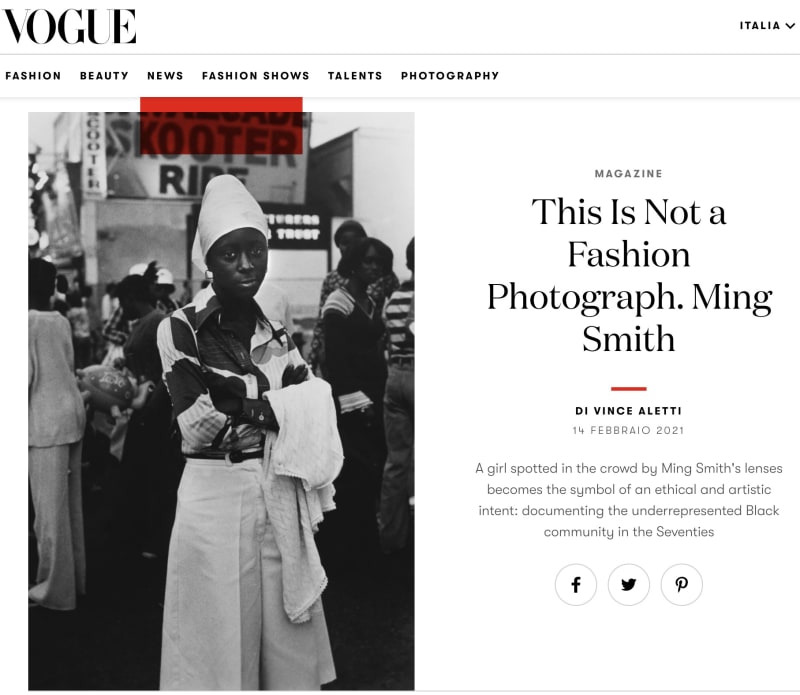A girl spotted in the crowd by Ming Smith's lenses becomes the symbol of an ethical and artistic intent: documenting the underrepresented Black community in the Seventies.
The Kamoinge Workshop, a group of Black photographers formed in New York in 1963 “to address the underrepresentation of African Americans in their field,” is the subject of an important and exciting exhibition at the Whitney Museum of American Art. (It continues until March 28.) Gathering up the wide-ranging work of 14 members in the first two decades of the group’s existence, the show focuses on individual talents as well as the collective ethos; in the language of the Kikuyu people of Kenya, kamoinge means “a group of people acting together.” Roy DeCarava–a master of the subtleties of darkness and light–was a sparking influence and the group’s first director. Early meetings were held in his Sixth Avenue loft, where no-holds-barred group critiques were delivered to a John Coltrane soundtrack. “It is our endeavor to produce significant visual images of our time,” wrote founding member and driving force Louis Draper. “We speak of our lives as only we can.” At issue was not just the underrepresentation of Black photographers in exhibitions and the media and but the prevalence of images that, willfully or not, misunderstood and misrepresented the Black experience. An early portfolio of work opens with this statement: “The Kamoinge Workshop represents a group of black photographers whose creative objectives reflect a concern for truth about the world, about the Society, and about themselves.”
When Ming Smith joined the Workshop in 1973, at Draper’s invitation, she became the first and, for many years, the only woman in the group; six years later, when the Museum of Modern Art bought two works, she became the first Black woman in their photography collection. Her work stands out at the Whitney and is the subject of an excellent monograph, just out from Aperture. Largely self-taught, Smith acknowledges influences as varied as Diane Arbus, Romare Bearden, Lisette Model, Matisse, Brassaï, and DeCarava, but she has an instinctive, improvisational approach to photography that only deepened when she became what critic Greg Tate calls “a creative compatriot and fellow traveler” with jazz musicians. (She married one–saxophonist David Murray– in 1979, and many of her later photographs were made on the road with his band.) For her, “photography is mystical, spiritual, magical,” and her black-and-white work can be vividly impressionistic and process-driven, involving painting, tinting, collage, double-exposure, and exhilarating passages of blur. That said, the image above, one of a series made at Coney Island, is uncharacteristically straightforward. Smith, who modeled for several years before joining Kamoinge, titled it “Instant Model” in recognition of her subject’s flair, modesty, and quiet, faintly amused assurance at being picked out from the crowd.
Vince Aletti is a photography critic and curator. He has been living and working in New York since 1967. A contributor to “Aperture”, “Artforum”, “Apartamento” and “Photograph”, he co-wrote “Avedon Fashion 1944-2000”, published by Harry N. Abrams in 2009, and is the author of “Issues: A History of Photography in Fashion Magazines”, published by Phaidon in 2019.
Vogue Italia, n. 845, February 2021

